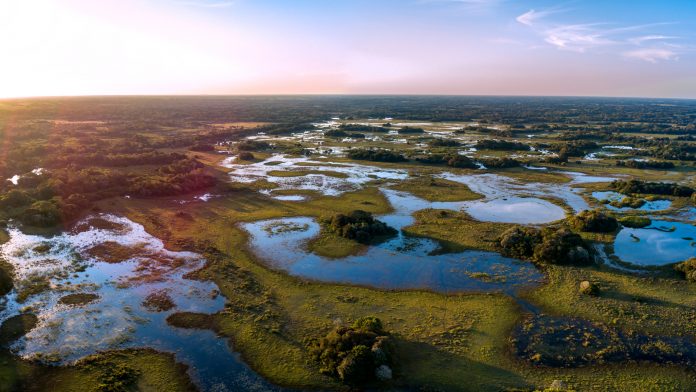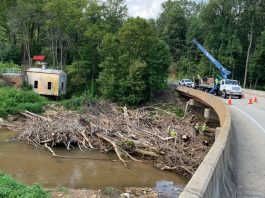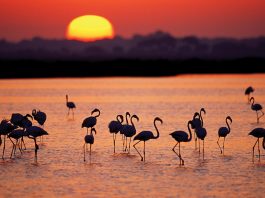The Innovation Platform speaks to Wetlands International Europe about how healthy and restored wetlands can contribute as nature-based solutions to the European Green Deal.
Wetlands International Europe (WIE) welcomes the European Commission’s Green deal and calls for an additional step forward by committing to draft and approve a restoration plan for Europe, in which wetlands have a prominent place.
Wetlands International Europe is an association of 10 NGOs from six European countries, working together to support improved EU policy development and implementation as a means to improve practices and investments regarding wetland ecosystems and sustainable water management. They use the expertise of their members and of their global network to inform EU policy and decision-makers, and then in turn inform their members and global partners on the implications that EU policy developments may have for them.
Engaging with different networks and working in partnership with a wide range of stakeholders simultaneously allows WIE to have a broad understanding of existing and upcoming environmental issues and of the role of the EU in addressing or exacerbating them. Ultimately, the association wants to ensure that wetlands are safeguarded and restored for people and nature. Moreover, the member organisations and networks have different geographical focuses, working in the whole of Europe, from North to South, East to West, in EU countries and in neighbouring and candidate countries.
WIE members and networks also work in different scales of operation and influence: from the global, to the EU, to the sub-regional, to the national or local level, engaging with different sectors, cultures and languages, in rural and urban settings. What binds all this richness and diversity together is WIE’s common focus on wetlands, common goals, and the common understanding of the need to address water and biodiversity issues in an integrated manner.
The Innovation Platform speaks to WIE’s Head of office & Programme Manager, Yurena Lorenzo, about how healthy and restored wetlands can contribute as nature-based solutions to the European Green Deal, in particular to the EU Biodiversity Strategy 2030.
To begin, can you give us an introduction into wetlands?
Wetlands occur where water meets land. They include mangroves, peatlands and marshes, rivers and lakes, deltas, floodplains and flooded forests, rice-fields, and even coral reefs. Wetlands exist in every country and in every climatic zone, from the polar regions to the tropics, and from high altitudes to dry regions. Wetlands and the life they support are being damaged and lost faster than any other ecosystem, with global losses of over 64% since 1900. This loss is accelerating, with the greatest impacts in locations and regions where development pressures are most intense. Conversion of wetlands for other land uses, changes in flooding patterns and pollution are among the biggest causes of wetland loss and degradation.
Wetlands cover a small percentage of the earth’s surface, yet they are essential systems – they are the arteries and veins of the landscape. They are rich in nature and vital to human life, and act as water sources and purifiers. They protect our shores and are the planet’s greatest natural carbon stores. They are also crucial to agriculture and fisheries.
What is your feedback in terms of the EU 2030 biodiversity strategy roadmap?
The Communication on “The European Green Deal” released by the European Commission in December 2019 is a positive step towards integrated efforts to protect natural resources and biodiversity. WIE welcomes this effort but calls the EU for an additional step forward by committing to draft and approve a restoration plan for Europe, in which wetlands have a prominent place.
Healthy and restored wetlands can contribute as nature-based solutions to the European Green Deal, in particular to the EU Biodiversity Strategy 2030. These healthy freshwater ecosystems support abundant biodiversity, climate resilience and the sustainability of our water systems. Yet Europe’s wetlands and their biodiversity face an emergency just as acute as the EU’s climate emergency. Wetlands comprise approximately 2% of the EU’s territory (12.5% at pan-European level) and 4.3% of the Natura 2000 area and are among the most threatened ecosystems in Europe – being lost three times as fast as forests, as 35% have disappeared since 1970. This comes at an enormous cost and a loss of the valuable services they provide, directly impacting Europe’s greenhouse gas emissions, quality and quantity of our waters and biodiversity.
Our key recommendations for the EU are as follows:
- The Biodiversity Strategy 2030 can and should recognise the importance of wetlands and prioritise actions to protect, restore and sustainably manage these ecosystems, by:
- Protecting and recovering Europe’s wetland biodiversity;
- Introducing legally binding restoration targets including wetlands;
- Proposing a free-flowing rivers initiative;
- Conserving and restoring peatlands; and
- Promoting and incentivising urban wetlands; and
2. The EU should commit to adopt a Nature Restoration Plan linked to a nature investment plan aiming at helping Member States and communities to shift to a new way of living, working with and thinking of nature, in particular wetlands.
Why rewetted peatland are so important to reduce CO2 emissions?
Peatlands are lands with a peat layer at the surface. Peat accumulates when soil is permanently waterlogged and died-off plant remains do not completely decompose. It contains a large proportion of organic carbon. Over centuries, peatlands have been drained for agriculture, forestry and peat extraction. The negative con-sequences of this use become more and more obvious. Drainage allows oxygen to enter the soil, leading to microbial decomposition of the peat and thereby emission of substantial amounts of CO2 and N2O.
WIE has been bringing to the European arena the importance of rewetted peatland to reduce CO2 emissions to attention and showcased examples of paludiculture. So far, peatlands have not been given as much as attention as needed. They cover only 3% of the world’s land surface but hold 25% of the global soil carbon, making them the world’s most effective carbon stores holding. However, if drained, they excessively emit carbon rather than storing it due to decomposition of organic matter.
Paludiculture is the productive use of wet peatlands. First used by Hans Joosten (1998), paludiculture is known as a land management technique that cultivate commercially interesting crops on wet or rewetted peatlands under conditions that maintain the peat body, facilitate peat accumulation and sustain the ecosystem services associated with natural peatlands. Research has also shown its cost effectiveness and its ability to meet with the requirements of the international commitments with respect to protecting climate, water and biodiversity.
Despite all the benefits of paludiculture, obstacles and counteracting incentives exist in the current Common Agricultural Policy, which are preventing farmers to go for it. Action for better legal integration of paludiculture into the post 2020 CAP is being taken by Wetlands International in order to give suitable incentives for the farmers.
Can you tell us about some of your current policy projects?
Rivers are one of the most endangered ecosystems in the world and the ongoing construction of dams in many of Europe’s rivers means that the ecological degradation persists. We are cooperating with NGO partners to protect river basins that are highly threatened by the (planned) construction of hydropower plants such as the Douro river in Portugal and the Vjosa river in Albania. Through lobby and advocacy at European Union level, we aim to contribute to enhanced conservation, restoration and sustainable use of rivers.
Rivers, lakes and wetlands are all protected under the EU Water Framework Directive. This law is critical to ensure that Europe’s freshwater ecosystems are protected and brought back to good health. The law has proven to be successful when properly implemented and enforced. Yet the actions taken to date by Member States fall far short of what is needed to bring Europe’s freshwater ecosystems into good ecological health. Barriers to achieving the objectives include Member States’ lack of adequate funding for measures, the small scale of restoration measures and the persistent use of exemptions covering nearly half of Europe’s waters.
Jointly with our members and partners across Europe, we work to ensure that the Water Framework Directive remains intact, that the legislation is fully implemented by Member States and enforced by the European Commission so that Europe’s waters are returned to good health by 2027.
Utilising wetlands in agriculture
When it comes to agriculture, wetland ecosystems offer a variety of different services. For example, the Commonwealth of Australia suggest that wetlands can be utilised in terms of supporting fertile soils.1 They can also reduce erosion, and retain sediments and nutrients. As a result, this can help the growth and production of agricultural crops. In accordance to this, it is important to note that high parts of floodplains are ideal for growing crops. This is because floodplain soils are both nutrient-rich and naturally fertilised, resulting in a good ecosystem for crop growth.2 Furthermore, in aid of this, increasingly more flood-tolerant crop varieties are being used in order for wetland ecosystems to be utilised.
References
- Australian Government. 2016. Wetlands and agriculture. Department of the Environment. Available at: https://www.environment.gov.au/water/wetlands/publications/factsheet-wetlands-agriculture
- Verhoeven, J.T.A., and Setter, T.L. 2009. Agricultural use of wetlands: Opportunities and limitations.” Annals of Botany 105(1):155-63. DOI: 10.1093/aob/mcp172. PubMed
Yurena Lorenzo
Head of office & Programme Manager
Wetlands International Europe
Yurena.Lorenzo@wetlands.org
europe.wetlands.org
Please note, this article will also appear in the first edition of our new quarterly publication.









